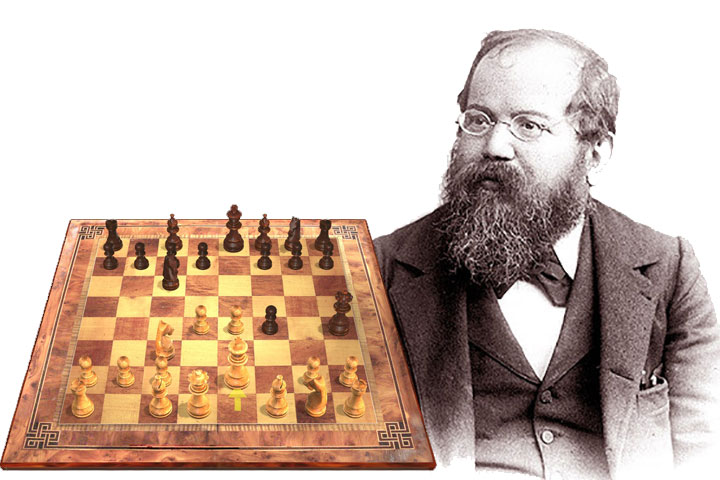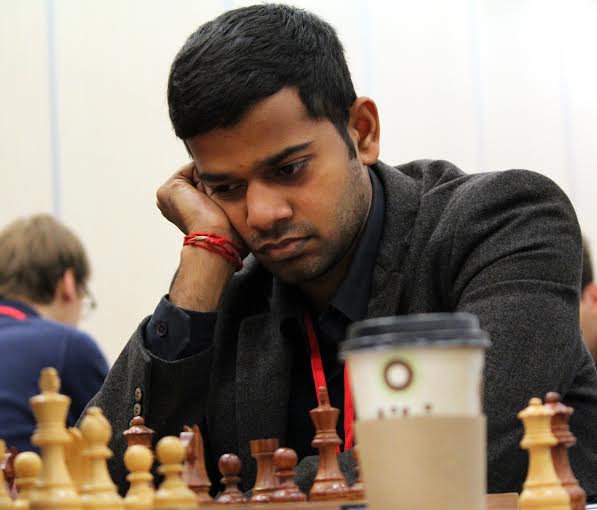


"A win by an unsound combination, however showy, fills me with artistic horror." – Wilhelm Steinitz
One of the greatest thinkers the game of chess has ever produced was the Austrian world champion Wilhelm Steinitz. A giant step forward in chess understanding was offered by his scientific principles in positional chess. It was a period when combinations were believed to be a product of the intuition of a genius. One of Steinitz' earliest experiments was a scientific study of combinations. He studied the positions where combinations occurred, and tried to define why they could materialize.
A combination can be defined as a forced sequence of moves, usually involving a sacrifice, leading to a huge advantage or victory. Steinitz was no stranger to combinations and was in both the giving and receiving end of them. Here are four well-known examples. Note that you can move pieces in the diagrams to analyse. The positions are given in a replay window at the bottom of the page. There you can start an engine to analyse the moves.
16...Rxd2+ 17.Kxd2 Rd8+ 18.Kc1 Ba3+ 19.Rb2 Qc3 20.Bh3+ Kb8 21.Qb5 Qd2+ 22.Kb1 Qd1+ 23.Rxd1 Rxd1#.
16.Bxg7 Kxg7 17.Nh5+ Kh8 18.Qh6 1-0.
20.Qg4 g6 21.Ng5+ Ke8 22.Rxe7+ Kf8 (22...Kxe7 23.Re1+ Kd6 (23...Kd8 24.Ne6+)) 24.Qb4+ Kc7 25.Ne6+ 23.Rf7+ Kg8 24.Rg7+ Kh8 25.Rxh7+ 1-0.
11.Re1+ Be6 12.dxe6 Nxb3 13.exf7+ Kd7 14.Be6+ Kc6 15.Ne5+ Kb5 16.Bc4+ Ka5 17.Bb4+ Ka4 18.axb3#.
There are many obvious positional defects to the positions of the losing side: a weak king, badly coordinated pieces, and knights on the rim. Steinitz concluded that positional defects are the main reason for the existence of combinations. In the absence of a positional advantage one should not look for a combination.
He derived through his study that the initial position did not offer enough to go after the opponent and instead one should aim to accumulate small advantages and avoid forcing moves at the early stages of the game. The next two positions show how Steinitz perspective of the openings evolved over his career.
Such moves, which do not have any direct aim in the opening, must have been a surprising and revolutionary idea in those times. Steinitz did not completely give up on his gambits but included the closed games as part of his game.
We can make sense of Steintiz discoveries in the following way:
Note that you can click the fan icon to start an engine.
 About the author
About the authorBorn in Chennai in 1989 Vishnu Prasanna started playing competitive chess in 2002 at 12 years of age – the age at which one of his students became a grandmaster! He took to it "like fish and water, working on chess at all times except bedtime."
He trained under several prominent international coaches including Anand's trainer GM Elizar Ubilava, Fabiano Caruana's and Anish Giri's trainer Vladimir Chuchelov, Anand's Current Second GM Grzegorz Gajewski and Dutch GM Ivan Sokolov (among others).
Since 2016 Vishnu has been coaching professional chess players, and has organized numerous individual, group and online camps, attended by hundreds of Indian and International chess players. He is currently training D. Gukesh, the second youngest GM in chess history, as well as GMs Surya Sekar Ganguly, Adhiban Baskaran and IM Leon Mendonca, among many others.
Since 2017 Vishnu has been married to Dr. Raghavi Nagarajan, who is a WIM.